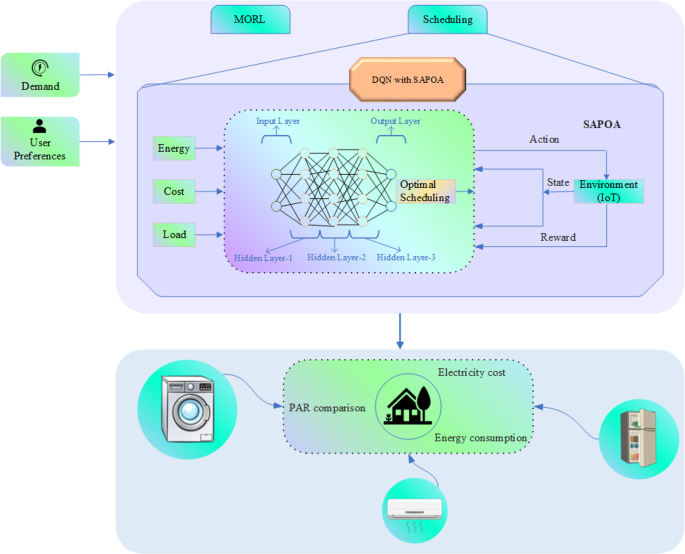Key Takeaways
- A new smart home energy management system optimizes energy use through real-time pricing, targeting large appliances while considering user preferences.
- The system utilizes advanced algorithms, like the Self-Adaptive Puma Optimizer and Multi-Objective Deep Q-Network, to maximize efficiency and minimize user dissatisfaction.
- Dynamic adjustments based on energy costs and adaptive learning enhance appliance scheduling, ensuring cost-effectiveness while improving user satisfaction.
Innovative Energy Management for Smart Homes
The proposed smart home energy management system aims to optimize energy consumption, reduce costs, and enhance user satisfaction through real-time energy pricing. It adapts to individual preferences and learns from past usage patterns, focusing on significant energy-consuming appliances such as refrigerators, washing machines, and air conditioners.
The system employs complex algorithms—including the Self-Adaptive Puma Optimizer Algorithm (SAPOA) and the Multi-Objective Deep Q-Network (MO-DQN)—to efficiently schedule appliance operations. By gathering data on energy use and costs, it dynamically adjusts schedules to maximize operational efficiency while minimizing energy waste.
User preferences play a critical role in this system. The management algorithms prioritize user satisfaction by allowing designated operation times for appliances and minimizing shifts in timing that might lead to dissatisfaction. The algorithms also consider various performance metrics to continuously refine energy management strategies.
In addition, the system is designed to be responsive to real-time energy price fluctuations, encouraging users to modify their consumption patterns during peak periods. This flexibility is key in maintaining grid stability and supporting renewable energy integration.
Overall, the integration of advanced algorithms within a smart home context reveals a promising approach to enhancing energy efficiency and user experience, providing a robust solution for modern energy management challenges.
The content above is a summary. For more details, see the source article.















